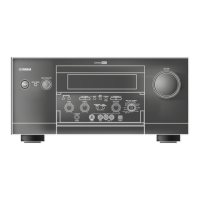E-86
DIGITAL SOUND FIELD PROCESSING (DSP)
Understanding sound fields
A sound field is defined as the “characteristic sound reflections of a particular space”. In
concert halls and other music venues, we hear early reflections and reverberations as well
as the direct sound produced by the artist(s). The variations in the early reflections and
other reverberations among the different music venues is what gives each venue its special
and recognizable sound quality.
Yamaha sent teams of sound engineers all around the world to measure the sound
reflections of famous concert halls and music venues, and collect detailed sound field
information such as the direction, strength, range, and delay time of those reflections.
Then we stored this enormous amount of data in the ROM chips of this unit.
■ Early reflections
Reflected sounds reach our ears extremely rapidly (50 ms – 80 ms after the direct sound), after reflecting from one surface only — for
example, from the ceiling or a wall. These reflections provide vital information to our ears. Early reflections actually add clarity to the direct
sound.
■ Reverberations
These are caused by reflections from more than one surface — walls, ceiling, the back of the room — so numerous that they merge together
to form a continuous sonic “afterglow”. They are non-directional, and lessen the clarity of the direct sound.
Reflected sounds image

